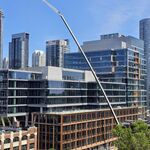But aviation analysts argue another airport simply isn’t needed at this time.
“It’s a dumb idea. There is no demand for that airport,†said Fred Lazar, a business professor at York University. “If there was the demand, Hamilton would be a thriving airport.â€
Even though many cities around the world, such as New York and London, have several airports within their metropolitan areas, Lazar argued the Greater Toronto Area doesn’t have the population base. Plus, airlines would be reluctant to split services and operations between Pearson and Pickering.
“The market is just not there to support it,†he said. “I don’t think Pearson will be at capacity in 2027.â€
Pearson spokesman Scott Armstrong said the airport handled 35 million passengers last year, up 4.4 per cent from a year earlier, and there were 433,000 takeoffs and landings, up 1.2 per cent.
“Over the next 15 or 20 years, we could get to 60 million passengers, but long-term planning is far from an exact science,†Armstrong said, adding that Pearson is focused on using its existing infrastructure before considering any additional projects, though it can build a sixth runway if needed.
Armstrong said Pearson, which operates as a not-for-profit private company, is still growing, adding new carriers, including Russia’s Aeroflot and EgyptAir this month alone.
By contrast, the three main New York area airports handled more than 120 million passengers last year.
Robert Kokonis, an analyst with AirTrav research firm, said Pickering would essentially be the fourth commercial airport in the region, including Hamilton and Toronto’s island airport, where Porter Airlines hopes to expand its operations.
If Porter, which wants to fly Bombardier’s new CSeries jet to cities such as Vancouver and Los Angeles, wins permission, other carriers, such as WestJet and Air Canada, will also want slots there, he said.
While airports aren’t built overnight, Kokonis argued that master plans are full of economic assumptions — “a mug’s game†this far out in time.
“It’s an awful lot of money to build a new airport,†he said, adding the federal government could use some of that money to offer rent relief to Canadian airports to make them more competitive with U.S. airports, which have been drawing loads of Canadian travellers in recent years.
Kokonis argued that Hamilton could also be developed more, especially because it has no curfew, so planes can take off and land around the clock, unlike Pearson and the island airport.




